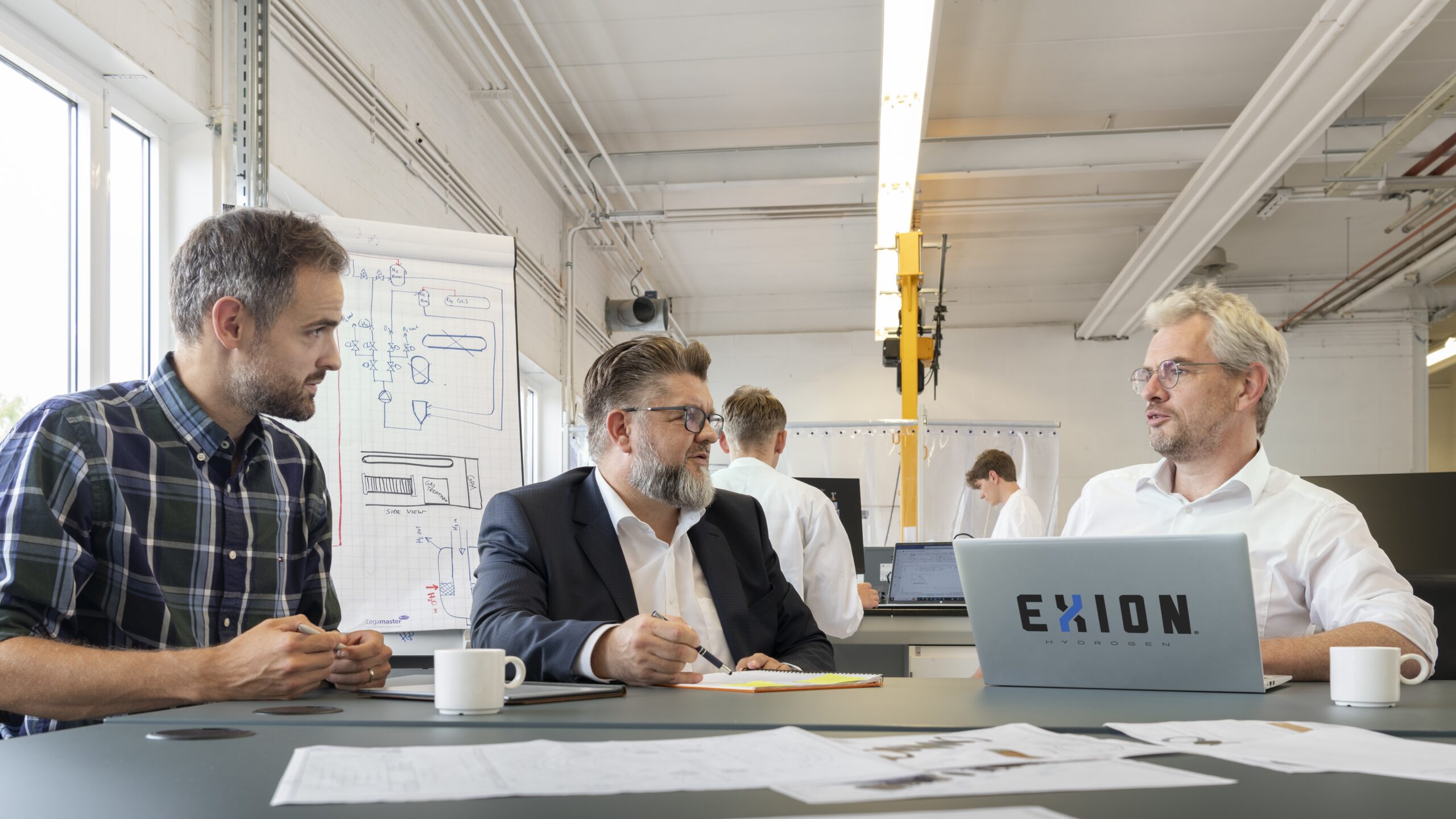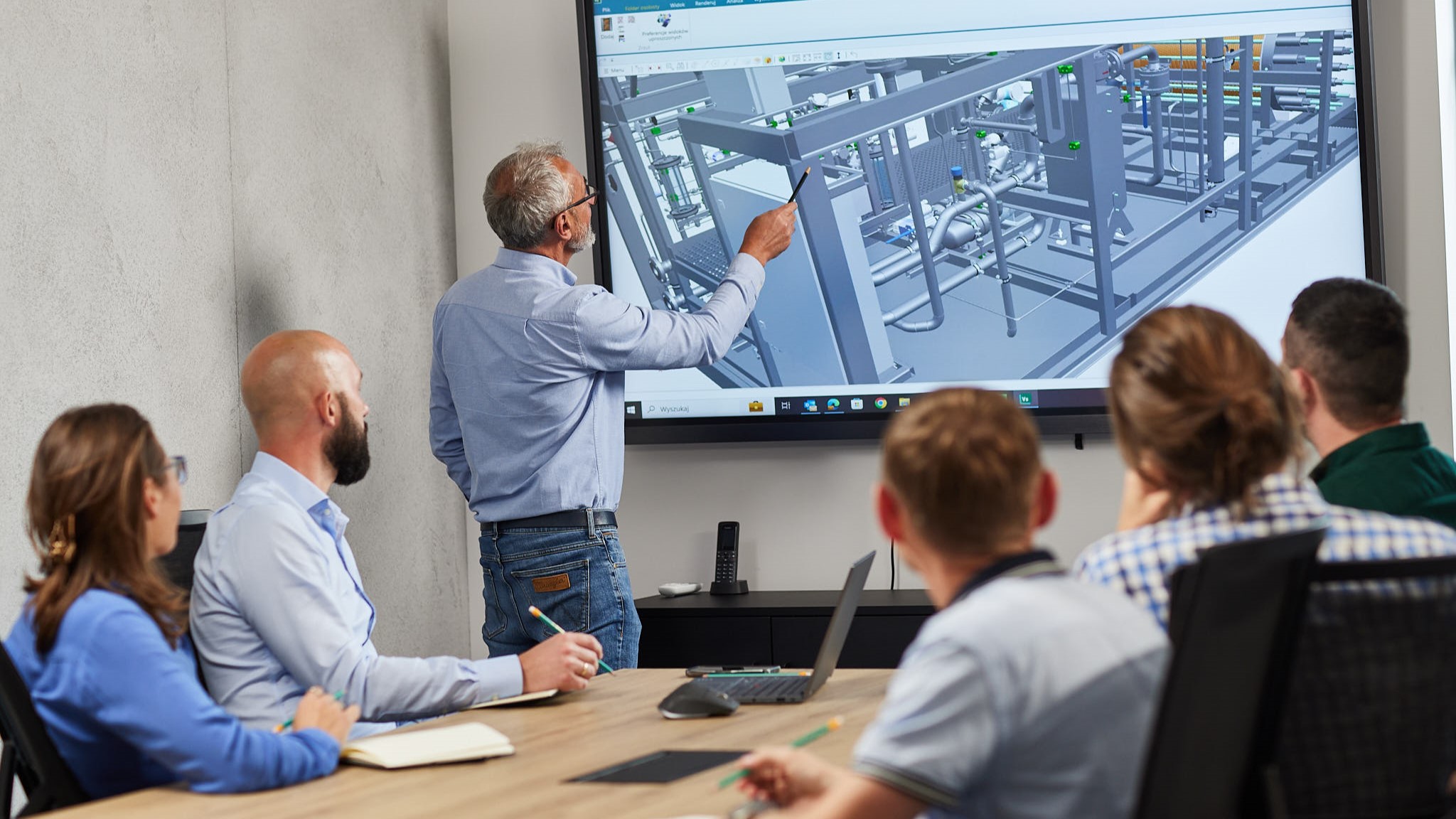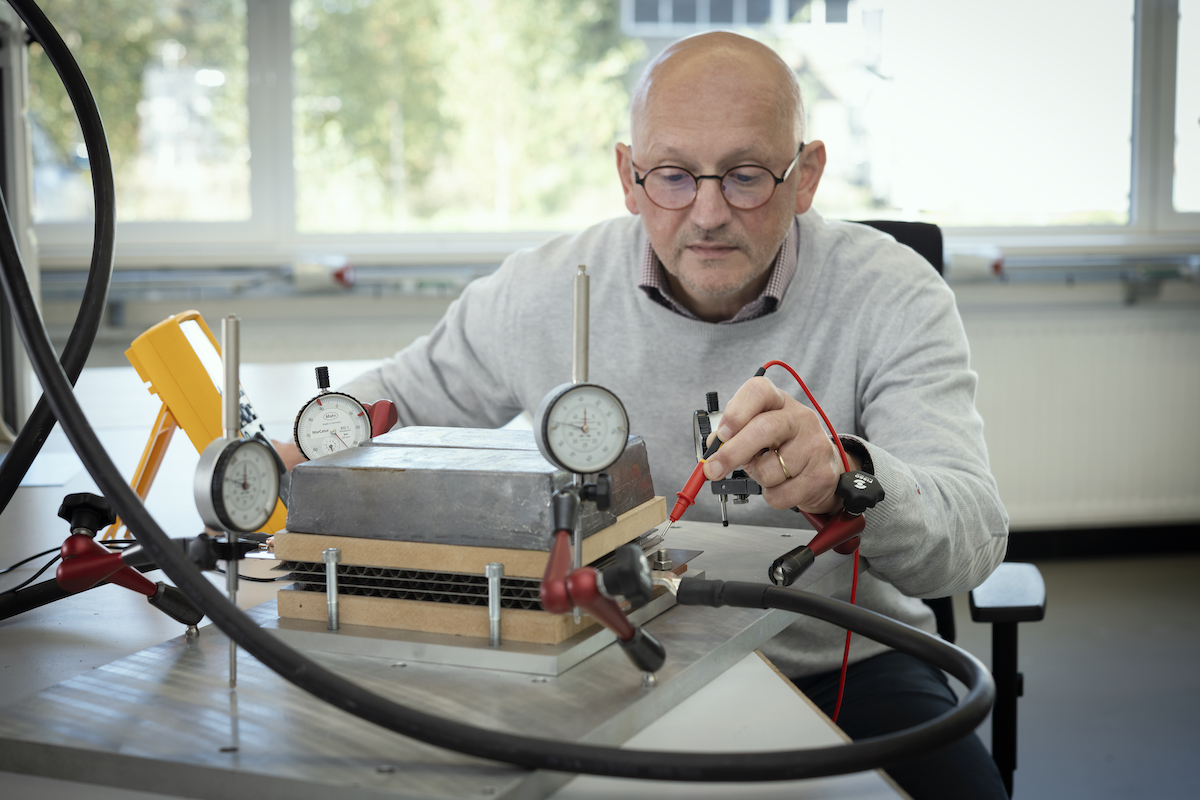Durable electrolyzers use smart design, premium materials, and integrated control mechanisms to optimize lifespan and performance.
In this blog post we will share:
- how we use premium materials throughout our entire system, from the small components in our cell stacks to the large subsystems in the Balance of Plant;
- how we vigorously control the internal parameters such as temperature and current density to minimize stress levels on the system.
We are convinced that the design decisions described in this article are crucial to building the most durable electrolyzers with optimal life span and performance.
We look forward to hearing your thoughts and concerns regarding the durability of water electrolyzers in the comments section below.


Durable electrolyzers require premium materials
Durable electrolyzers consist of four main parts:
- the Cell Stack, the heart of the system, for water splitting;
- the Balance of Stack, including the piping, pump(s), gas separators and heat exchangers;
- the Balance of Plant, with the supporting systems such as process control, water preparation and purification, cooling, electrical systems, and gas subsystems;
- the Housing of the system, whether indoor or outdoor.
At Exion Hydrogen, we have optimized these components in the following way:
A proprietary Cell Stack for durable electrolyzers
All metallic parts in our cell stacks are made of pure nickel instead of nickel-coated stainless steel, because pure nickel can better withstand the typical corrosive conditions in an alkaline cell stack. This results in more performant and durable electrolyzers as opposed to cheaper and more fragile systems on the market.
For the same reasons, we only use high-standard catalyst coatings, membranes, gaskets, flanges and electrical connection plates from premium suppliers. In addition, we designed a new proprietary structural ring to optimize the gas production in the cell stacks and to mitigate the risk of deformations under pressure.
A tailored Balance of Stack
To fully materialize the potential of our cell stacks, we have designed our Balance of Stack with the same high standards in mind. For the electrolyte loop, we use piping and gas separators in stainless steel, and robust valves, fittings, and pumps specifically designed to withstand the typical caustic conditions. This, again, results in more durable electrolyzers.
A carefully dimensioned Balance of Plant
Our engineers carefully dimensioned the control, cooling, electrical and water purification systems to strike the perfect balance between durability, safety and performance. We only use the most reliable components from seasoned manufacturers in the market to ensure the most durable electrolyzers with the longest lifespan and the best support.
Reinforced and insulated Housing
We have decided to only deliver systems in a reinforced and insulated 40ft HighCube container with a 20ft open Rooftop Frame. This protects our water electrolyzers from environmental conditions, and it makes transportation, use, maintenance and safety compliance easier. An added benefit of our containerized system is its shortened installation and commissioning time.
Reduced and controlled stress levels make durable electrolyzers
Running alkaline water electrolyzers at cell stack temperatures of 80 degrees Celsius and more may lead to a higher efficiency in the short run, but it will eventually harm the electrolyzers. To avoid this from happening, we carefully monitor the temperature in our cell stacks, and we optimize the system and gas cooling accordingly. This reduces the overall stress levels on our HyGGe™️ 100A water electrolyzers, thus improving their lifespan and reliability.
Likewise, running alkaline water electrolyzers at a higher current density may improve the production capacity in the short run, but it will be less efficient and more harmful to the electrolyzers in the long run. By carefully measuring and managing the current density in our electrolyzers, we reduce the stress on our systems, and optimize their durability as a result.
Thoughtful design for durable success
We spare no expense or effort when it comes to building durable electrolyzers. By carefully considering every design decision, using only the best components, and integrating continuous control and optimization into our system, our design team excels in building water electrolyzers that perform better and last longer.

What are your thoughts and concerns regarding this article and the durability of water electrolyzers?
Feel free to share them in the comments section below.
Do you have any questions, want to reach out, or want to work together?
Please get in touch through sales@exionhydrogen.com or +32 14 91 99 19.

